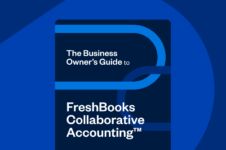Professionalism and creativity are often placed in opposition to each other in this way, when often the opposite is actually true.
Writers, designers and artists often worry that turning their craft into a business means sacrificing creativity for the sake of professionalism.
Many experienced freelancers find that pitching their work to clients actually improves their creative practice by helping them differentiate the creative output from the professional offering. And this helps them hone the professional side without sacrificing their creativity.
At the end of the day, becoming a creative ‘professional’ often has less to do with changing the creative aspect of your output and more to do with how you manage and communicate the “stuff” around that creativity. Our advice? Focus on doing a few basic things well:
Professionalize Your Deliverables, Not Your Output
One thing that creative freelancers learn very quickly is that it’s actually much more important to professionalize the way you organize, deliver and present your work to clients than it is to professionalize the work itself.
Put simply: Change how you present, not what you present.
To be a more professional creative: Change how you present, not what you present.
This starts at the very beginning: Provide accurate estimates for the project, including costs and timelines. Your clients are running a business too. Much as they value your creativity, they also want to know you can deliver on time and on budget.
And throughout the course of a project, manage your work and client conversations in clear, consistent ways. Nobody wants haphazard email threads and lost attachments. So establish whether your client has a preferred file format, delivery method or workflow for deliverables.
Default to Dropbox, Google drive or your preferred method if and only if your client hasn’t specified a preferred method for delivery.
If you’re handing in a large project with multiple files, make sure your file structure makes intuitive sense and that your folders are properly labelled. Doing this can save you and your client a lot of time, and make you look like a real professional.
If you’re a copywriter like me, some of your clients might soon start asking you to hand copy in using Dropbox Paper, which looks a bit more polished than Google documents and can spit out professional-looking PDFs with relative ease.
When It Comes to Getting Paid, Act like a Big Company
Maybe you’re an independent, soft-spoken, laid-back creative who doesn’t like to impose on other people.
I don’t care what kind of person you are: to be a successful creative freelancer, when it comes to finances and getting paid, you must behave like a Fortune 500 company.
You’ve probably heard this drill a million times, but it bears repeating: Ask clients for up-front deposits. Make sure your invoices look professional. Make it as easy as possible for your clients to pay you, i.e. by offering online payment options.
Include a deadline on your invoices and consider adding late charges. Follow up with unresponsive clients or consider using a software solution that allows you to automate those difficult conversations so you don’t have to worry about them.
Making sure that your clients pay you and staying on top of your own cash flow might not come naturally, but it’s one of the main habits that separates successful freelancers from struggling ones.
Also, this helps you distinguish between good and bad clients: After all, approaching the task of getting paid as a professional will soon reveal which clients are also the most valuable.
Charge for Your Time and Expenses like a Big Company Would
This is something I struggled with early on in my career: Every beginner freelancer worries about charging clients too much for fear of scaring them off. And the idea of adding expenses or extra billed time on top of the quoted price can be even more terrifying.
As it turns out, billing a client for all the work you’ve done and expenses you’ve incurred is more likely to strengthen your relationship with your client, rather than weaken it.
Communicating time and expenses clearly helps your client understand exactly how much work is involved in the tasks they’re assigning you. This will actually increase their chances of budgeting projects successfully in the future.
Even if you’re not rebilling expenses to clients, there’s still immense value in staying on top of your expenses. Being in control of costs and expenses is essential when tax season rolls around.
It usually takes one bad tax season for freelancers to learn the value of understanding and keeping track of deductible expenses. But when you want to take down that tax bill, you’ll want to have tracked and maintained records of all those deductibles.
Try Automating the Parts of Your Business That You Don’t Like Doing
If you’re a freelancer, you’re probably doing this because at some point, you decided that the confines of a regular 9-5 office job weren’t something you wanted to deal with.
You’ve probably never been that enthusiastic about paperwork, accounting, navigating organizational hierarchies, or any of the more transactional parts of work life. If you’re like me, the idea of hounding someone for delinquent payments is terrifying and overwhelming.
The reality is that no one likes performing these tasks, and often the best solution is to simply automate them away.
An increasing number of creative workers are finding value in services like IFTTT, which allow you to chain together hundreds of apps like Facebook, Dropbox, Gmail and more to automate away some of the more strenuous, repetitive tasks in your daily routine.
Instead of avoiding a task you don’t like doing, seek out a tool that makes it easier. Mobile apps make it easy to scan receipts as you go. Invoicing software lets you handle things like recurring bills and payment reminders.
The point is: there’s almost always an easier way, so don’t torture yourself. What’s more… those solutions don’t sap your creativity. The opposite in fact: They liberate you so you feel more professional, yet have more time to be more creative.

Written by Nick Zarzycki, Freelance Contributor
Posted on June 22, 2018
 Every Small Business Tool You Need to Thrive
Every Small Business Tool You Need to Thrive
![Are You a Financially Savvy Freelancer? [Quiz] cover image](https://prod-blog-k8s.freshenv.com/blog/wp-content/uploads/2017/06/financially-savvy-600x400.png) Are You a Financially Savvy Freelancer? [Quiz]
Are You a Financially Savvy Freelancer? [Quiz]




